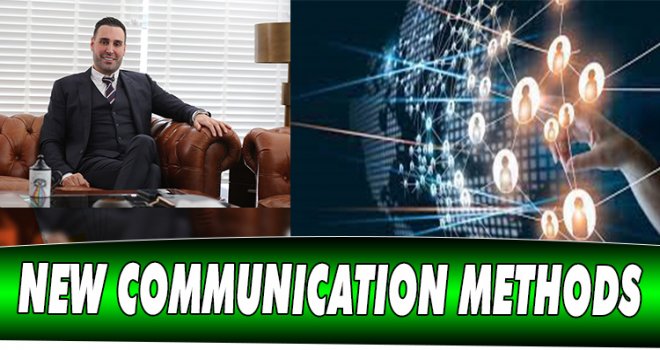

NEW COMMUNICATION METHODS.

This text presents a synthesis of views that could be an example of a possible match between exchanges in a social network and a collective knowledge management perspective, provided an integrative vision is adopted.
Improvements
The discussion quickly focused on the tools available to assess the impact of the crisis and identify promising market segments for employment.
It is urgent for the debaters to create an observatory on the current and future status of their professions that collects, compiles, activates, updates data on employment, recruitment of young graduates and interprofessional mobility in this sector.
This collective tool should be created in close cooperation with the key players involved (professional associations, educational institutions, etc.) and similar studies should be carried out at European level to allow comparisons.
Primary education administrators state that graduates of all national diplomas and professional titles must produce integration figures in order to be re-accredited.
However, it is seen that this source of information is not the subject of a consolidation study at the national level.
Professional associations should conduct collective monitoring on growth markets and emerging integration sectors.
It's not just a question of looking back, it's also an opportunistic approach to take a forward-looking approach, even identifying business niches, demanding sectors of activity and dynamic geographic areas.
New Communication Methods
The crucial question of the image of the profession and the weight of blocking mental representations emerged very quickly. For some, professional representations belonged to another time, on the side of employers, recruiters, or the media, both for professionals and companies.
Others even speak of a rupture between two visions of I&D professionalism, highlighted by the impact of ICT, the Internet, digital technology and Web 2.0.
On the one hand, a highly traditionalist, legitimist vision suggests rather classical methods of professional intervention (even if the means change). However, it has become less specific in terms of the needs of organizations (the “documentation center” structure still remains).
On the other hand, a more innovative vision of the profession is emerging. There were approaches that were highly deterrent, but also more opportunistic and no longer tried to fit into traditional patterns or environments.
Is this just a professional communication problem?
Yes, there are those who campaign for stronger and, above all, more strategic communication. For others, the correct professional positioning remains the main question to be resolved today.
Later, the idea arose to develop and support a new, flexible and open representation of the profession without crystallizing on traditional emblems.
This requires a better understanding of the actual needs or expectations of companies regarding the management of their information, with an overview of global issues and the need for cross-functionality.
This also requires an emphasis on effective skills that specifically address the need for mediation or intermediation in all information processes of the company.
The idea that everyone knows how to manage information and it's just an IT issue is very common.
Professionals must prove their added value as an interface or essential transition between professionals from various professions (users, customers) and IT professionals and professionals from other services.
The general tone of the exchanges about the representations and stances of professionals is clearly stated. It is necessary to play a decisive role in the organizations of professionals.
Business Skill
It is recognized that I&D management is difficult to understand for companies or organizations. Needs are objectively real. However, they are not always clearly recognized and are not easily realized in the form of job offers or hiring intentions, especially in times of crisis.
In any case, these needs and these positions are not found where we previously sought them. In addition to the forward-looking perception of opportunities, professionals must include the knowledge and gestures that characterized the company's profession of yesterday.
Entry Strategy
For a participant, an information-document professional is not disconnected from users who have the same knowledge and skills as them today in terms of accessing information.
Exchange between users and professionals is essential. Consultation should result in dialogue, partnership, joint projects and even contracting of interventions.
We can even suggest a true entry strategy, relying on the use of I&D skills in the company's various business processes and functions. In other words, it is necessary to remove the specialist from the documentation center and, where necessary, instill or instill I&D skills.
In this context, the currently well-established quality management model bears witness to the success of a strategy of permeating a concept into organizations at all levels.
Dr.Yaşam Ayavefe
-
 KARAYOLLARI DAİRESİ, GÜVERCİNLİK VE SADRAZAMKÖY’DEKİ ÇALIŞMALARI TAMAMLADI..
KARAYOLLARI DAİRESİ, GÜVERCİNLİK VE SADRAZAMKÖY’DEKİ ÇALIŞMALARI TAMAMLADI..
-
 Arıklı, 23 Nisan Ulusal Egemenlik ve Çocuk Bayramı dolayısıyla mesaj yayımladı..
Arıklı, 23 Nisan Ulusal Egemenlik ve Çocuk Bayramı dolayısıyla mesaj yayımladı..
-
 Tosunoğlu: Vekil olmaktan mutlu değilim
Tosunoğlu: Vekil olmaktan mutlu değilim
-
 Dünyada israf edilen gıdalar, yetersiz beslenen insanların 2 katından fazlasına ..
Dünyada israf edilen gıdalar, yetersiz beslenen insanların 2 katından fazlasına ..
-
 Oğuz: 3 ayda bin 462 kişiyi ülkeye almadık, 827 kişiyi deport ettik
Oğuz: 3 ayda bin 462 kişiyi ülkeye almadık, 827 kişiyi deport ettik
-
 YÖDAK’ın Araştırılması Komitesi Başkanı Hasan Küçük oldu
YÖDAK’ın Araştırılması Komitesi Başkanı Hasan Küçük oldu
-
 Stefanu’dan Hristodulidis’e sert eleştiri: Kıbrıs sorununda izlediği çizgi esasl..
Stefanu’dan Hristodulidis’e sert eleştiri: Kıbrıs sorununda izlediği çizgi esasl..












